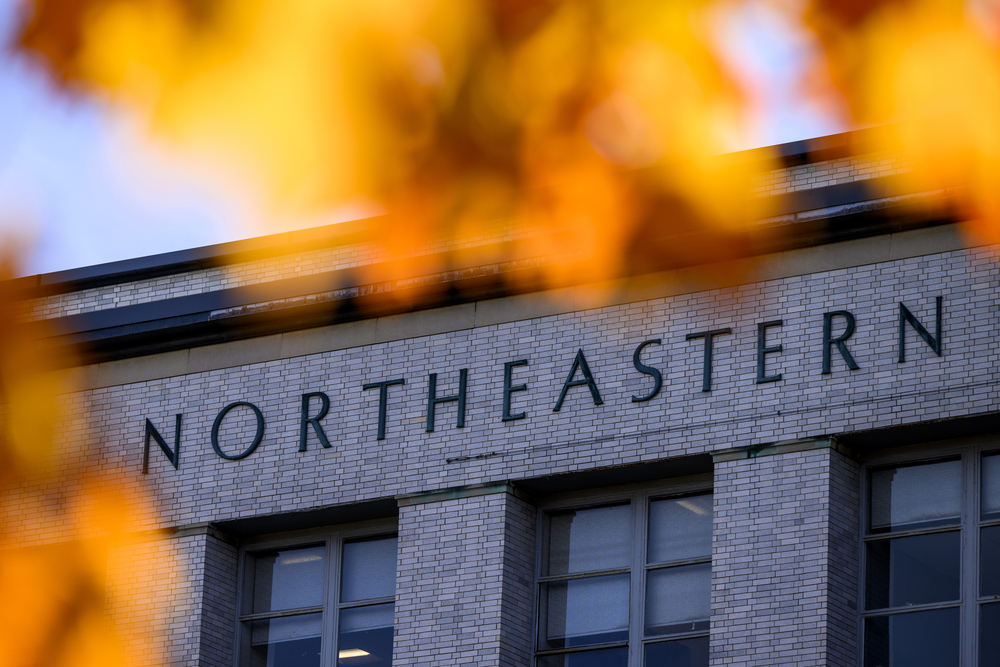When someone thinks of research, they may think of traditional lab work. When it comes to linguistics, research can take many different shapes.
Linguistics is the study of language and how language is structured. Research that studies phenomena as small as sound formation and as large as fieldwork to better understand the structure of a certain language can all be classified as linguistics research.
Northeastern University’s newest linguistics research group is the Interaction Lab (InLab). Aisulu Kulbayeva (Raspayeva), professor of linguistics, officially formed the lab in the spring of 2022 when a few students in her Intro to Language and Linguistics class expressed interest in the framework of discourse analysis. Discourse analysis had been introduced during the class, but these students wanted to delve deeper into exploring this linguistic approach. Now, the lab has grown to include Dr. Kulbayeva (Raspayeva) and five linguistics students: Luz Johnson, Margaret Morgan, Sasha Bhatia, Brooke Stark, and Northeastern alumna Hannah Lee. In November, they were accepted to the 2024 American Association for Applied Linguistics (AAAL) Conference.
Discourse analysis, the focus of the lab, is a form of linguistic research that investigates the structure of language that is more than one sentence long. This analysis considers the sociolinguistic context of the language. The Interaction Lab uses this framework to analyze two types of discourse: legal discourse and family discourse. However, their current project involves legal discourse.
“For discourse analysis, particularly in interactional sociolinguistics in which I’m trained, we usually work with naturally occurring data,” says Dr. Kulbayeva (Raspayeva).
Last year, the Depp v. Heard trial gained notoriety due to its public nature. Every moment of the trial was televised, which made it an optimal trial to conduct linguistics research with.
“For InLab, I needed some kind of readily available data, and therefore social media came in very handy. We decided that this hearing would be a good topic since we had all the recordings and it was a global phenomenon,” says Dr. Kulbayeva (Raspayeva).
During weekly virtual lab meetings, the group discussed readings and watched the videos of the trial before deciding which aspect of it they wanted to study. As they learned more about linguistics and examined the trial, the members of the lab chose which linguistic phenomenon they wanted to study in the context of the trial.
“My specific research is on how the lawyers used certain types of questions to introduce certain topics to the jury. Even if the questions are objected to or if they’re struck from the record, those certain lines of thinking are introduced to the jury. That works towards creating a certain narrative either for the client or against the witness,” says Sasha Bhatia, one of the undergraduate researchers who is a part of the lab.
Some of the other topics the researchers are studying include questions in the testimonies of experts, objections, how lawyers construct an identity for their clients by creating a narrative, and how lawyers reflect differently on the same physical and mental abuse during opening and closing statements.
To conduct this research, the students that are a part of the lab rewatch the videos from the trial and take notes. These notes are usually organized into an Excel sheet, and the result of this process is called a coding schema. In Bhatia’s case, she takes note of the different types of questions asked and sorts them into categories. For example, she notes instances of yes/no questions, who/what/when/where questions, and more. She records the exact wording, who asked the question, and when the question was asked. In the end, she had a spreadsheet that she could pull numerical data from.
“As I learn and read more, more things become clear about what I had noticed that didn’t really make sense to me in an academic sense at first. Now, I can attach frameworks to instances in which certain question types are used,” says Bhatia.
Both Dr. Kulbayeva (Raspayeva) and the undergraduates have noticed the academic and personal growth they went through as they learned more about linguistics and the Depp v. Heard trial during their participation in the Interaction Lab. Their ability to synthesize and articulate complex information is a very important skill when it comes to research, and all the members of the InLab have experienced improvement in that area. Additionally, the subject matter of the trial hits close to home for many of the researchers because they are all women. The trial’s prevalence in popular culture effected how domestic violence towards women is viewed, especially in very public and complex situations. The members of InLab have developed a more robust vocabulary and a data-backed approach that they can use while speaking about the trial.
“It’s more than just your emotions about it, you can back it up with science,” says Bhatia.
The Interaction Lab is a glowing example of what can happen when students’ interest in academic research is encouraged. Dr. Kulbayeva (Raspayeva) started the lab because she saw her students’ passion for linguistics and desire to interact with the field of study in a way that goes above and beyond what is taught in the classroom.
“Northeastern attracts very, very talented young people, and I think there should be more spaces for them to learn about research and for them to try to do research in a manner which frees them from the pressure of doing it for the sake of grades,” says Dr. Kulbayeva (Raspayeva).
We can’t wait to hear about the Interaction Lab’s success at AAAL 2024 after it takes place in March!

